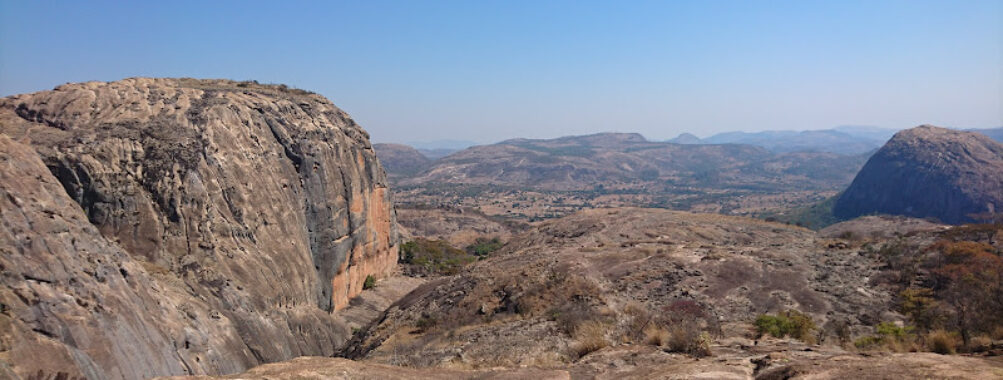
Ngomakurira Mountain
Table of Contents
Description
Ngomakurira Mountain stands as one of Zimbabwe’s most captivating natural wonders, just a stone’s throw from Harare. This towering granite dome, whose name translates to “drums that sound” in Shona, has earned its moniker from the unique echoing sounds that reverberate through its rocks. And trust me, once you experience it yourself, you’ll understand why locals have been drawn to this mystical place for generations.
What really gets me excited about Ngomakurira is how it seamlessly blends natural beauty with rich cultural heritage. The mountain’s ancient cave paintings tell stories of those who called this place home centuries ago. I remember my first visit – standing there, gazing at these rusty-red images, feeling like I’d stepped into a time machine. These well-preserved artworks offer fascinating glimpses into Zimbabwe’s past.
Key Features
• Massive granite dome formation with unique acoustic properties
• Ancient San rock art and cave paintings dating back centuries
• Multiple hiking trails suitable for different fitness levels
• Natural caves and rock shelters perfect for exploration
• Breathtaking panoramic views of the surrounding countryside
• Sacred sites significant to local spiritual practices
• Diverse wildlife including various bird species
• Natural rock pools (seasonal)
• Distinctive geological formations
• Photography hotspots, especially during sunrise and sunset
Best Time to Visit
The dry season, from April to October, is absolutely perfect for climbing Ngomakurira. The weather’s more predictable, and the paths are less slippery. I’d particularly recommend early mornings – that’s when you’ll catch the most spectacular views, and the temperature’s much more forgiving. Plus, the lighting during sunrise is absolutely magical for photography.
Avoid visiting during the rainy season (November to March) if possible. The rocks can get pretty treacherous when wet, and afternoon thunderstorms are common. That said, if you do end up here during the wet season, just make sure to wrap up your hike before noon to dodge those typical afternoon showers.
How to Get There
Getting to Ngomakurira is pretty straightforward, especially if you’re coming from Harare. The mountain sits about 60 kilometers northeast of the city. You’ll want to head out along the Borrowdale Road and follow the signs toward Domboshava. The last stretch involves some dirt roads, so a vehicle with decent ground clearance is your best bet – though I’ve seen plenty of regular cars make it during the dry season.
If you’re not driving yourself, several tour operators in Harare offer day trips. Some local hiking groups also organize regular excursions, which can be a great way to experience the mountain with knowledgeable guides and fellow adventure enthusiasts.
Tips for Visiting
From my multiple visits to Ngomakurira, I’ve learned a few things that might make your experience even better. First off, bring more water than you think you’ll need – the granite reflects heat and can make the climb more challenging than expected. A good pair of hiking boots with solid grip is essential – those granite surfaces can be tricky!
Start your hike early to avoid the midday heat. Pack some snacks and maybe even a light lunch – there are some amazing spots up top perfect for a picnic with a view. Don’t forget your camera, but remember to be respectful when photographing the cave paintings (no flash photography, please).
A local guide can really enhance your experience by sharing the mountain’s rich history and pointing out easy-to-miss features. They know all sorts of fascinating stories about the rock art and the mountain’s spiritual significance that you won’t find in any guidebook.
Speaking of guides, it’s worth mentioning that some paths aren’t clearly marked, so if you’re not familiar with the area, having someone who knows the way can be super helpful. The main trail takes about 2-3 hours to complete, depending on your pace and how often you stop to take in the views (which, let’s be honest, will be often – they’re that good).
Oh, and here’s something most people don’t think about – bring a light jacket even on warm days. The wind can pick up at the summit, and temperatures can drop surprisingly quickly. And if you’re interested in the cave paintings, morning or late afternoon light makes them much easier to see and photograph.
Keep in mind this is a sacred site for local communities, so being respectful is crucial. Stay on marked paths, don’t remove any rocks or plants, and keep noise levels reasonable. The mountain got its name from the drumming sounds it makes – take a moment to listen for this natural phenomenon, especially when the wind picks up.
One last thing – the entrance fee is quite reasonable, but bring cash as card payments aren’t always reliable. And yeah, there might be some vendors selling drinks and snacks near the entrance, but don’t count on it – better to come prepared with everything you need for a day of exploration.
Trust me, Ngomakurira is one of those places that’ll stick with you long after you’ve left. Whether you’re a serious hiker, history buff, or just someone looking for a unique day out, this mountain has something special waiting for you. Just remember to take your time, soak in the experience, and maybe even sit quietly for a moment to hear those ancient drums echoing through the rocks.
Location
Places to Stay Near Ngomakurira Mountain
Find and Book a Tour
Explore More Travel Guides
No reviews found! Be the first to review!